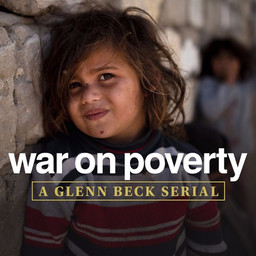Serial: War On Poverty - Abusing The System
War on Poverty
Watch The Glenn Beck Radio Program, Monday through Friday, 9am - 12pm ET on BlazeTV. www.BlazeTV.com/GlennThe War On Poverty is an unmitigated failure. The United States has gone from 26 million people on food stamps in 2007 to more than 47 million today. The cost of the program has gone from $33 billion to $77 billion. It has become so flawed that the Wall Street Journal reported millions are now legally entitled to collect food stamps as long as they have little or no monthly income. Thirty-five states have abolished asset tests for most food stamp recipients. These and similar paperwork reduction reforms advocated by the USDA are turning the food stamp program into a magnet for abuses and absurdities. Furthermore, according to the Journal, the Obama administration is far more enthusiastic about boosting food stamp enrollment than about preventing fraud. And there is fraud — a lot of it.
When looking at American poverty, one might expect poor people to be on food stamps — the homeless, the drug addicted, the perpetual scammer — not people with jobs, living in suburbia. One woman interviewed in a documentary received $750 each month from the food stamp program while making $70,000 annually, allowing her to purchase filet mignon and steaks. As she noted, it was easy to apply, so she took advantage. She also had a $9,000 breast augmentation while on food stamps.
So how good has the war on poverty been for American families? In 1960, just 9 percent of children lived in a single parent home. By 1980, there were more than 6.2 million families headed by a single woman, making up 19.4 percent of all families with children. By 1990, that number had risen to 84 million families, or 24.2 percent of the total. Today, that number sadly is at 34 percent.
Blacks have been hit especially hard. At the beginning of World War II, the illegitimate birthrate among black Americans was slightly less than 19 percent. In 1965, near the start of the Great Society, the rate of unwed births for blacks was 25 percent. Beginning in the late 1960s, the trend rapidly accelerated, reaching 49 percent in 1975 and 65 percent in 1989. Today, it is 72 percent. Nearly three-quarters of all black families are now single parent.
Fewer than half, just 46 percent of US children younger than 18, of all races, are living in a home with two married heterosexual parents in their first marriage. This is a marked change from 1960, when 73 percent of children fit this description.
Back in the early ’90s, the University of Washington showed that an increase of roughly $200 a month in welfare benefits per family correlated with a 150 percent increase in the illegitimate birthrate among teens.
There is one important caveat: Poverty in America is generally very different from poverty elsewhere in the world. According to the government’s own surveys, 80 percent of poor households have air-conditioning. Nearly, two-thirds have cable or satellite television. Half have a personal computer. Forty percent of America’s poor have a wide screen HD television. Three-quarters own a car or a truck. And nearly a third have two or more vehicles. Ninety-six percent of poor parents state that their children have never been hungry at any time during the last year because they could not afford food. And 82 percent of all poor adults reported that they too were never hungry at any time in the prior year.
 Glenn Beck
Glenn Beck




